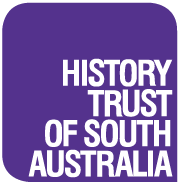Visitors enter the museum from West Terrace into the main display area which contains memorabilia of local transport, churches, shipping, shops, early settlers, agriculture, entertainment, hospital, war and various household items. See ship’s models and collections of sea shells. Discover Tumby Bay’s connection with the famous pastoralist and philanthropist John Tennant Mortlock and see Sir Charles Todd’s walking stick.
The second section contains items relating to saddle making, communications, council history and development, as well as various district and sporting photographs and trophies. Learn how Tumby Bay was first developed as a shipping port for the Burrawing Copper Mine at Lipson from 1872-92. You can use a real old fashioned telephone.
The final room is furnished with period furniture as a kitchen, laundry, sitting room and bedroom with clothing and pioneer memorabilia to match the period including a fascinating wardrobe hand carved by Colonel Lovell whilst headmaster at Lipson School.
The museum is run by the Tumby Bay branch of the National Trust. The group meets on the fourth Tuesday of every month (except December) 9.30am at the Museum.

